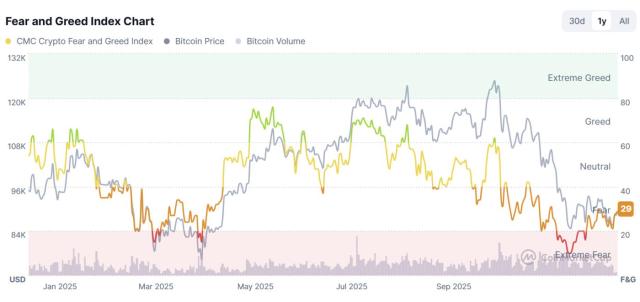Author: Biteye Core Contributor LouisWang
Editor: Biteye Core Contributor Crush
In the current blockchain world, Berachain may be the project with the most "anti-traditional" flavor.
The founder Smoky wears a bear head every time he appears in public;
The project name "Bera" is a tribute to the famous "hodl" misspelling in the cryptocurrency world;
While other projects are talking about ZK and new programming languages, they have chosen to build an EVM-compatible Layer1 mainnet based on Cosmos technology;
At a time when the transition from POW to POS is becoming a trend, they have proposed a brand-new POL (Proof of Liquidity) mechanism.
These seemingly absurd choices, however, embody a deep reflection on the pain points of the current public chains.
01 From NFT to Mainchain: A Unique Evolution Story
The story of Berachain starts with an NFT project called "Bong Bears". This seemingly casual NFT series adopted a Rebase mechanism similar to OHM: holders of the original Bong Bears can receive airdrop rights to subsequent series.
This simple design attracted a large number of users to hold long-term, and then they launched a series of projects such as Bond Bears, Boo Bears, Baby Bears, Band Bears, and Bit Bears.
How did this NFT project eventually evolve into a top-tier institutional investment and financing project worth over $100 million, and what is its uniqueness?
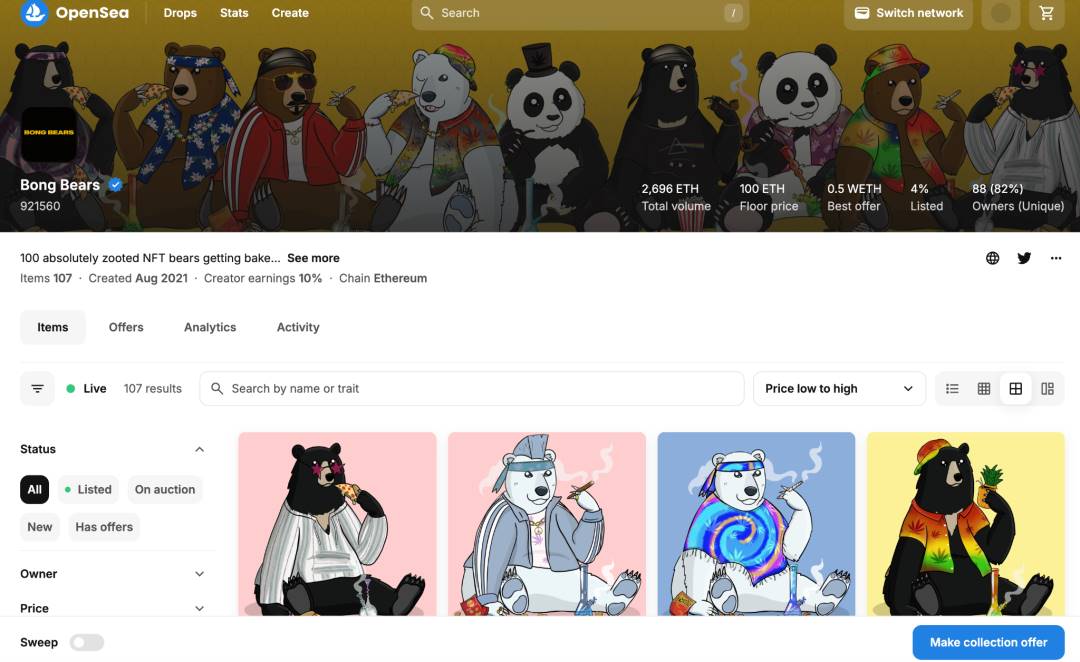
02 The Dilemma of Traditional Public Chains and the Innovative POL Solution
Traditional public chains face a fundamental problem: a large amount of value is locked at the infrastructure level, while the real value creators find it difficult to get reasonable returns. Validator nodes and token holders can get generous returns through staking, but their contributions are limited to maintaining network security.
For example, some public chains have a FDV of 10-100 million USD, but their actual TVL is less than 1 million USD, yet they have to pay over 10% in annual yield to maintain security. This mechanism has led to the "ghost chain" phenomenon - the chain has high security, but there are almost no actual applications and activities.
Proof of Liquidity (POL) is a brand-new consensus mechanism proposed by Berachain. Unlike traditional PoS networks that reward users by staking tokens, POL requires users to provide liquidity to specific liquidity pools to earn rewards. In other words, if you want to earn income on this network, you need to actually participate in ecosystem building, rather than just locking up tokens.
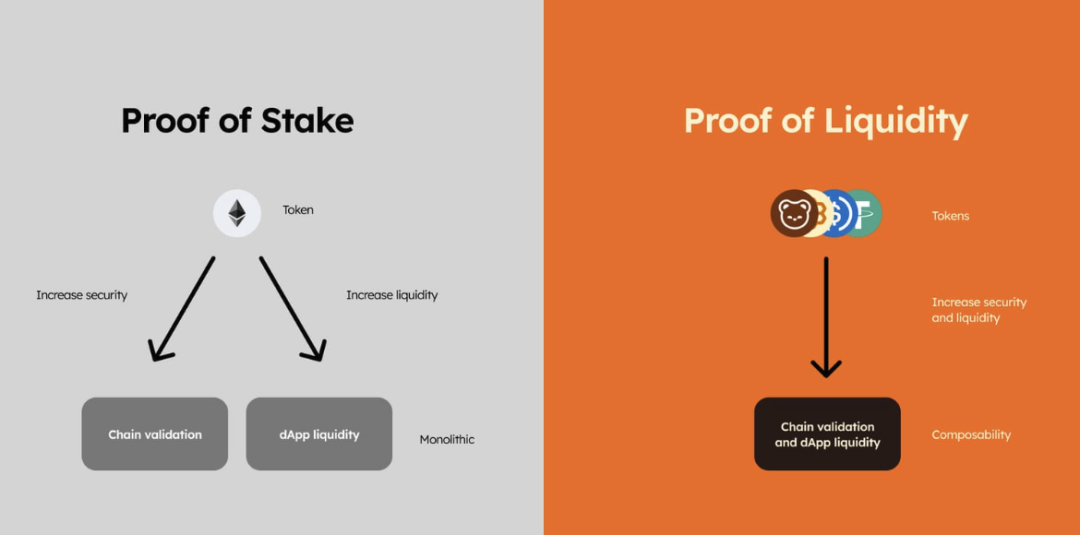
To support this mechanism, Berachain has designed a sophisticated three-token system: BGT as a non-transferable governance token that can be 1:1 converted to BERA; BERA is used to pay Gas fees and for market transactions; HONEY is a stablecoin backed by over-collateralized high-quality assets. These three tokens work together to build a self-sustaining economic model.
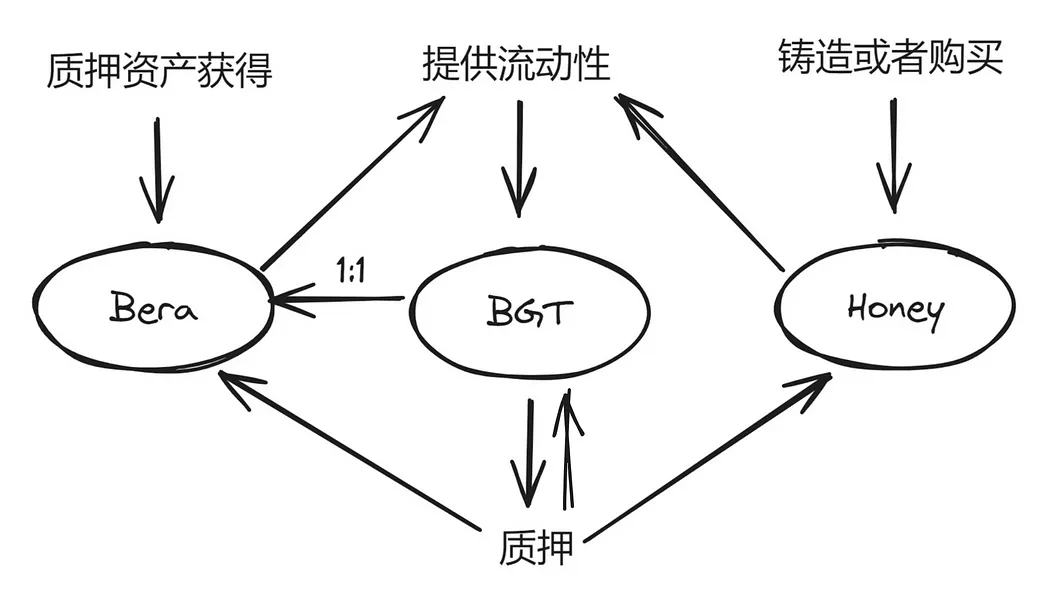
Under the POL mechanism, users receive BGT rewards by providing liquidity, and these BGT can be delegated to validator nodes to participate in network validation. Validator nodes not only participate in block generation, but can also vote to determine the BGT reward allocation ratio for different liquidity pools.
This creates a unique economic model: validator nodes need to carefully consider which projects are most valuable, as their votes directly influence the development direction of the ecosystem.
This mechanism design achieves three key breakthroughs:
First, it directly directs network value to the builders and participants of the ecosystem. Each protocol can independently design ways for users to acquire BGT, creating incentive mechanisms to drive ecosystem development. This direct value distribution model ensures that value-creating behaviors can be rewarded in a timely and adequate manner.
Secondly, it establishes a symbiotic relationship between validator nodes and project parties. The income of validator nodes is closely linked to the success of the projects, which motivates them to actively support the development of the ecosystem, rather than just focusing on their own staking income.
Finally, it creates a positive incentive loop. Increased user participation leads to stronger projects, and stronger projects in turn attract more users and liquidity, forming a virtuous cycle. This mechanism effectively prevents the "ghost chain" phenomenon, as network value is directly linked to the actual activity and utility of the ecosystem.

In terms of technical roadmap, Berachain has chosen to build based on Polaris EVM, which brings two major advantages. First, full EVM compatibility lowers the entry barrier for Ethereum developers; secondly, as part of the Cosmos ecosystem, Berachain gains powerful cross-chain capabilities through the IBC protocol. This technical choice provides a solid foundation for the future expansion of the ecosystem.
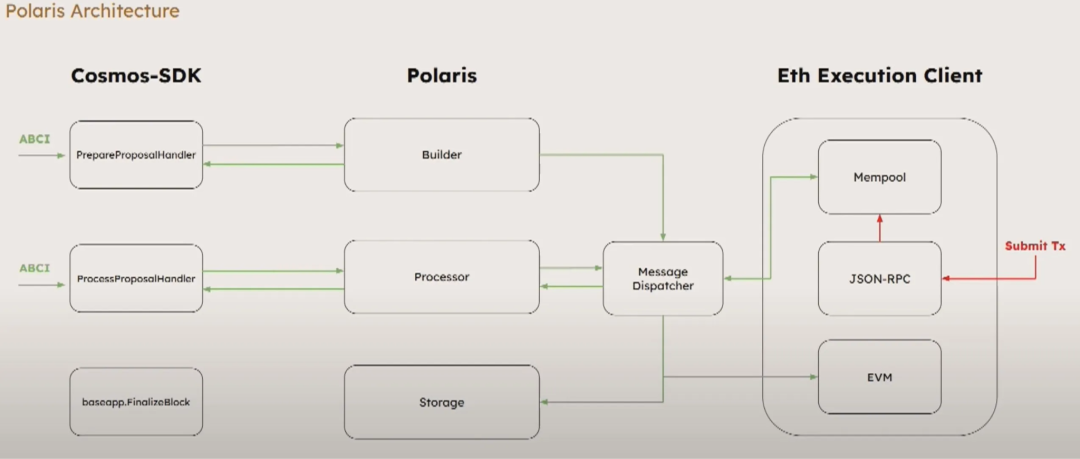
03 Community Culture: From MEME to Strong Consensus
Berachain's community culture building represents a completely new approach to community operations in the cryptocurrency world. While many new public chains neglect community culture building, Berachain has successfully built a highly identifiable and highly active community ecosystem.
This unique community culture is first built on an understanding of Ponzi culture. The Berachain team, initiated by several veteran DeFi project veterans, does not avoid the Ponzi label, but rather faces it with an open and humorous attitude. This attitude has gained more trust and recognition from the community, although the outside world often compares Berachain to the next Luna, this comparison ignores the essential differences in mechanism design between the two.
Secondly, there is a deep-rooted MEME culture. From the project name "Bera" to the founder Smokey wearing a bear head at official occasions, to the unique community language like "Henlo" and "Ooga Booga", it all demonstrates a highly internet-savvy culture that perfectly matches the current crypto aesthetic, naturally cultivating a strong sense of community identity.
Finally, let's not forget that Berachain originated from an NFT project, and from the original Bong Bears, NFT has not only been a digital asset, but also a carrier of community culture. Each project in the ecosystem has spontaneously associated its own NFT series with the Bear theme, forming a unified cultural symbol. This cultural identity is directly reflected in the data: the secondary market listing rate of the main NFT series is less than 2%. Compared to pure tokens, these NFTs carry more cultural attributes and a sense of community belonging.
04 Ecosystem Projects
Berachain has taken a bold but practical strategy in ecosystem building: the founding team personally develops the core infrastructure.
The founding team recognizes that if multiple functionally similar DEXes, lending platforms, and derivatives platforms are allowed to compete, it may lead to meaningless involution and vicious competition.
Therefore, they have decided to keep these three most important infrastructures under official control. More importantly, DEX, lending, and perpetual contract platforms are usually the main sources of revenue in a blockchain ecosystem.
By officially operating these services, Berachain can better channel the profits back to BGT holders, providing sustained value support for the governance token, and thus promoting the healthy development of the entire ecosystem.
Currently, Berachain has attracted nearly 100 projects to join, with DeFi projects taking the lead, fully reflecting Berachain's emphasis on liquidity. 15 native projects have received Bera incubator or VC investment, with a total of $24.4 million in public financing.
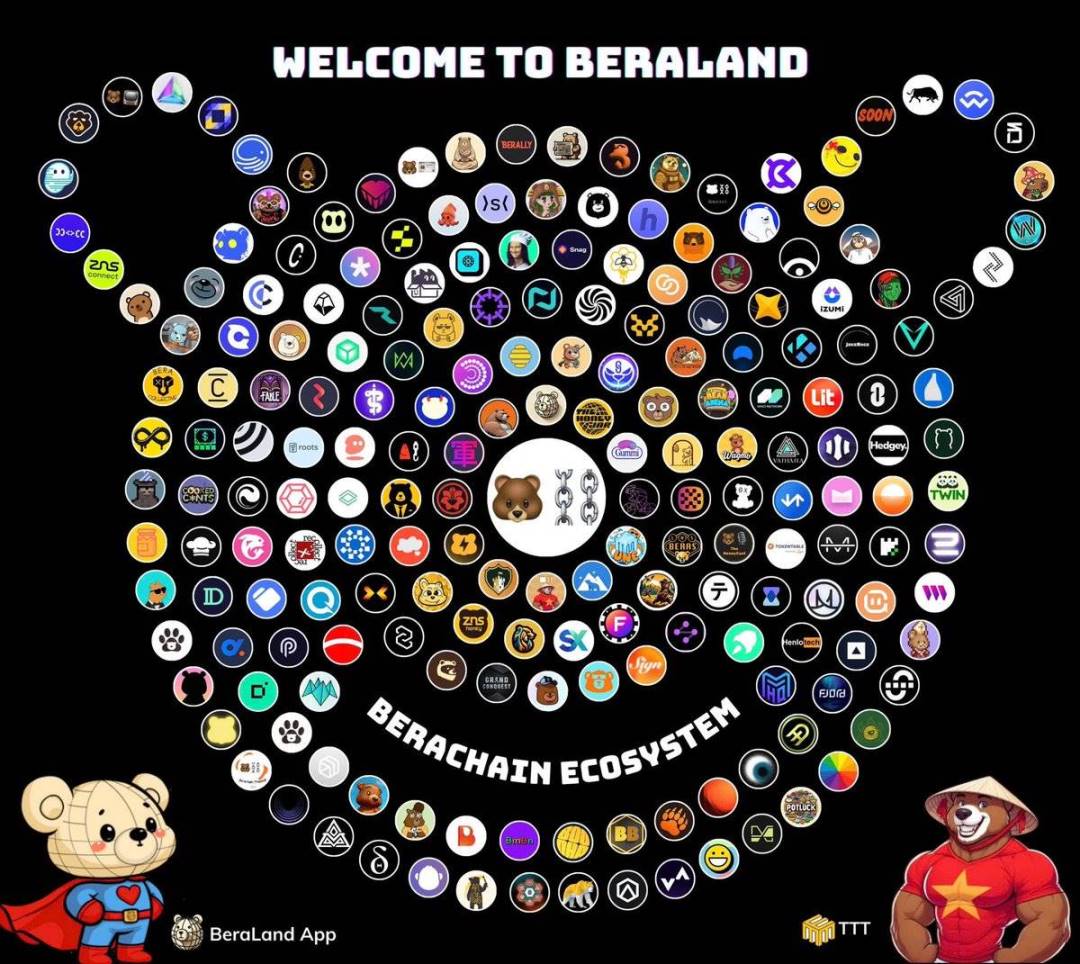
Shogun: Cross-Chain Transaction Infrastructure
Shogun has been selected for both the Build-A-Bera program and the Binance Labs S6 incubation project, committed to solving the core pain points of cross-chain transactions.
Currently, cross-chain transactions face multiple challenges: users need to manage multiple wallets, handle gas fees of different chains, and choose appropriate cross-chain bridges, while also needing to understand the ecosystems in depth. These complexities not only increase the difficulty of operation, but may also lead to low transaction efficiency or loss of funds.
Shogun solves these problems through an innovative intent execution system. The system introduces a "solver" mechanism to optimize the transaction path and maximize the TEV (Transactor Extractable Value).
Specifically, when traders set their trading intentions, solvers will search for the optimal execution path in a cross-chain environment: for buy orders, strive to complete the purchase at a price lower than the limit price; for sell orders, seek opportunities to sell at a price higher than the limit price. This mechanism transforms traditional MEV into user benefits, while providing a trading experience close to that of a centralized exchange.
Infrared Finance: Innovation in Liquidity Staking
Infrared Finance is based on the POL mechanism of Berachain, and has redesigned the liquidity staking model on the basis of the three-token architecture. The project provides a value maximization solution for BGT holders through the POL vault and iBGT liquidity staking derivatives.
The project has received financing support from Binance Labs, among others.
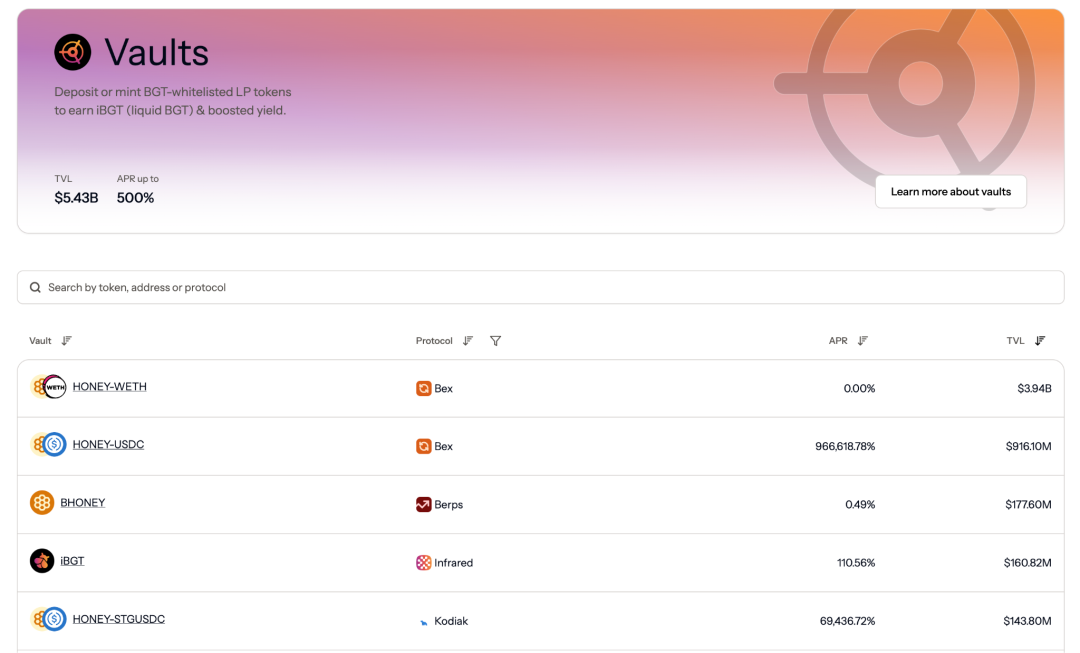
Kodiak: Efficient Liquidity Management
Kodiak is positioned as the native liquidity center of Berachain. The project innovatively combines centralized liquidity and automated liquidity management technology, aiming to provide the ecosystem with the highest quality liquidity services to support the efficient operation of the entire ecosystem. The project has received a $2 million seed round investment.
Goldilocks: Innovation Fusion of DeFi and NFTfi
Goldilocks has completed a $1.5 million financing led by Hack VC and Shima Capital, focusing on building DeFi and NFTfi infrastructure. The project contains two core components:
Goldiswap: A trading platform based on a custom AMM, adopting a dual pool design of FSL (supportive liquidity pool) and PSL (price supportive liquidity pool).
Goldilend: A lending platform built around the Bong Bears NFT series. Its innovation lies in the fact that the minimum valuation of NFTs is determined by the governance voting of LOCKS token holders, breaking away from the dependence on oracles and bringing a new value discovery mechanism to NFT finance.

Honeypot Finance: Innovation in Trading and Issuance Mechanisms
Honeypot Finance has completed multiple rounds of financing totaling $1.3 million, and has built two core products:
DreamPad: A token launch pad adopting the FTO (Fair Token Offering) model. The feature is that the project party has zero pre-allocation, providing 100% of the tokens to the market, ensuring maximum fairness.
HenloDEX: A decentralized exchange using the Batch-A2MM mechanism, which effectively prevents sandwich attacks through innovative trading mechanisms, while providing limit order trading functionality to optimize the user trading experience and reduce slippage.
More testnet projects can be queried through BeraLand.
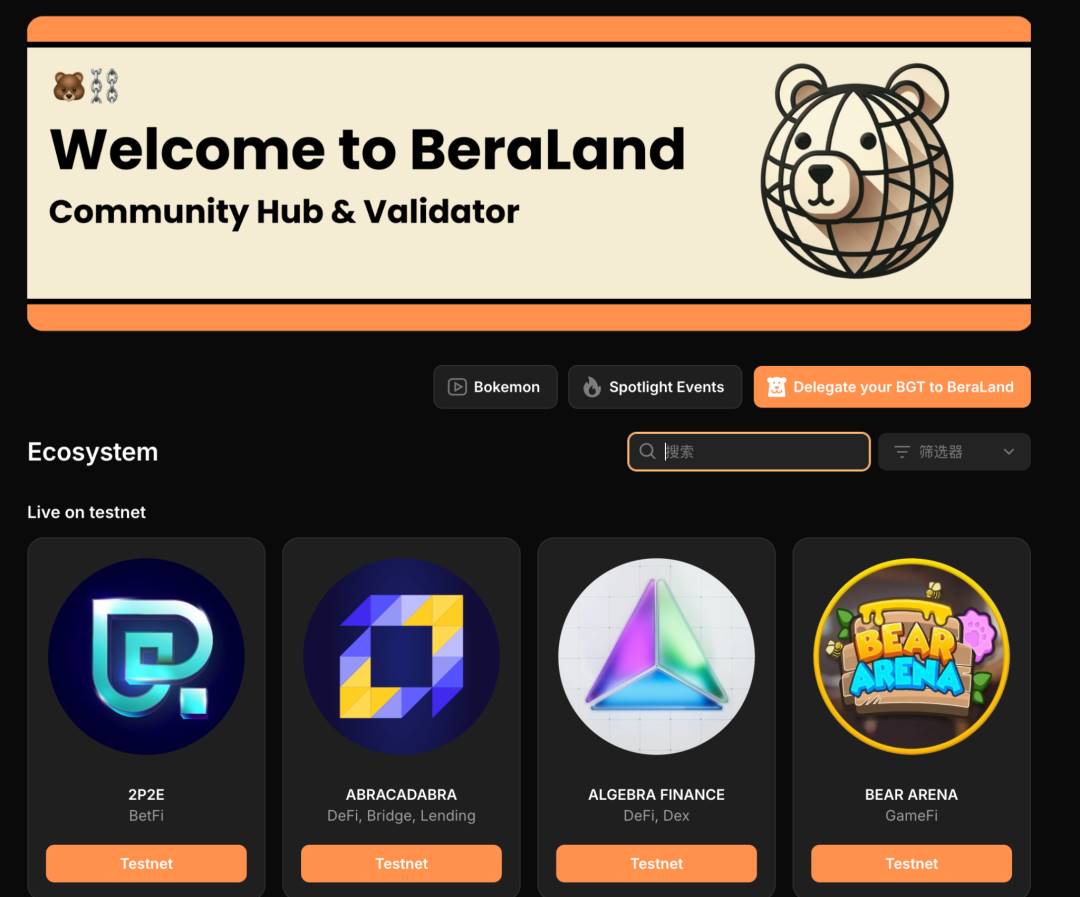
05 Participation and Interaction
Berachain is running the second version of the testnet Bartio, and the most basic interaction participation can refer to the Dapps interface on the official website, as mentioned earlier, they are all DeFi cornerstones made by Bera official.
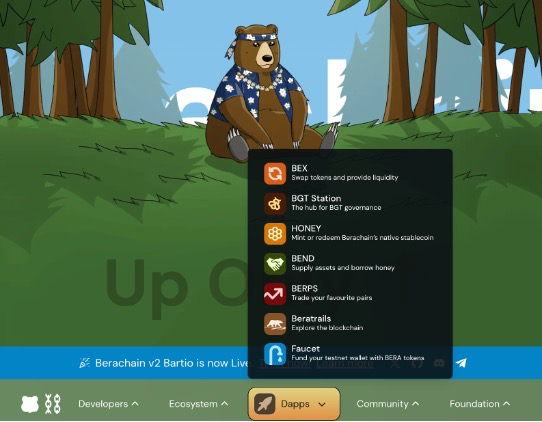
To participate in the interaction, you need to first obtain testnet tokens from https://bartio.faucet.berachain.com/, which has a small threshold filter, and the receiving address needs to have a balance of at least 0.001ETH on the mainnet, compared to the previous testnet scenario of "scarce water", this round of testnet water collection is very smooth.
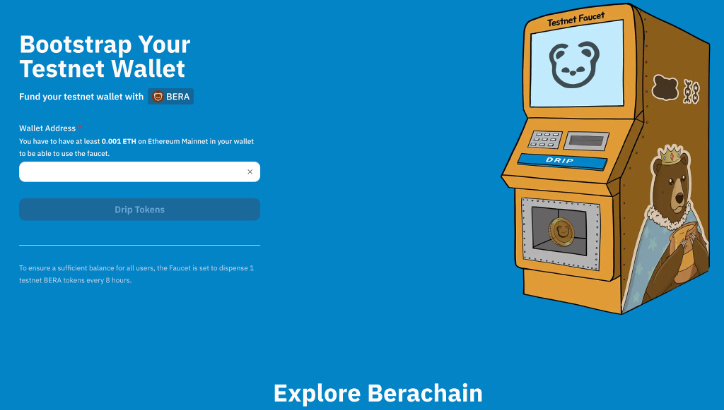
After obtaining the testnet tokens, you can perform swap interaction on BEX, converting the received $BERA into other tokens, providing liquidity, and note that you need to retain some $BERA for future gas consumption during the conversion.
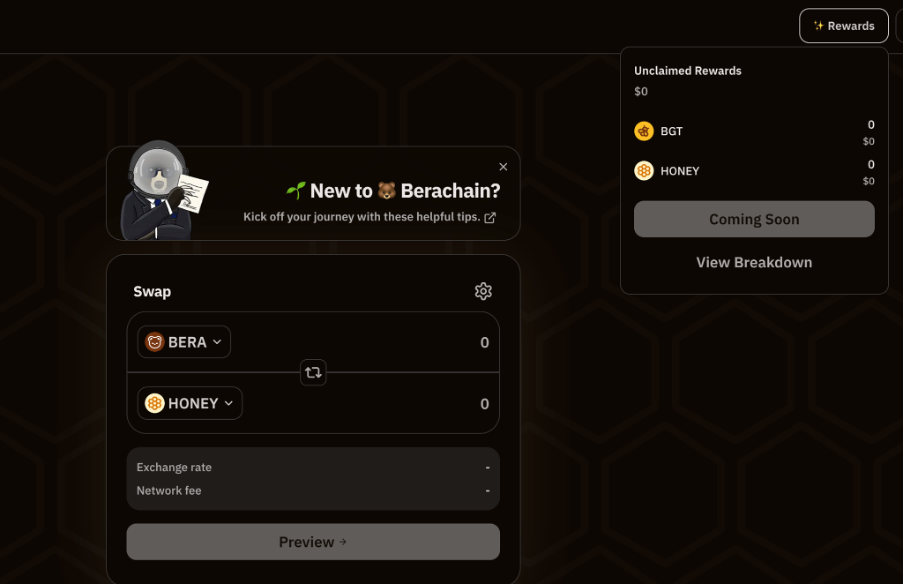
It is recommended to convert $BERA into the stablecoin Dai or STGUSDC, and then use them to mint the stablecoin $HONEY in HONEY.
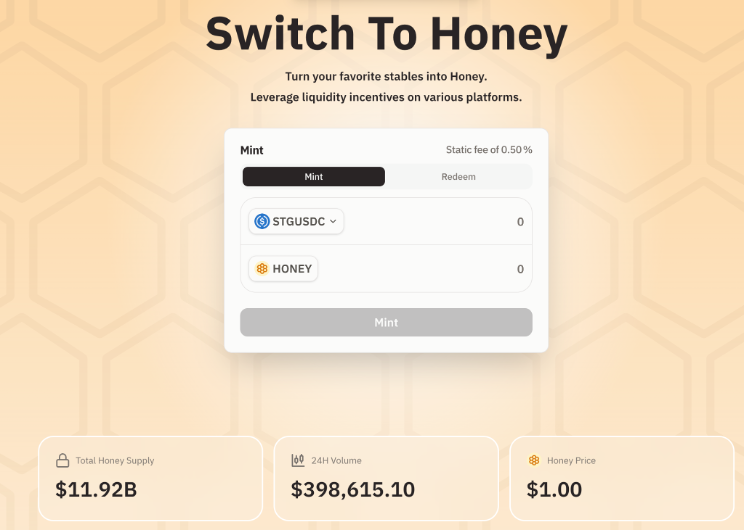
After obtaining $HONEY, stake it in BERP to get bHONEY, and then stake it in Station to the corresponding Vault to obtain $BGT earnings, or it can be directly used as trading collateral for derivative trading in BERP.
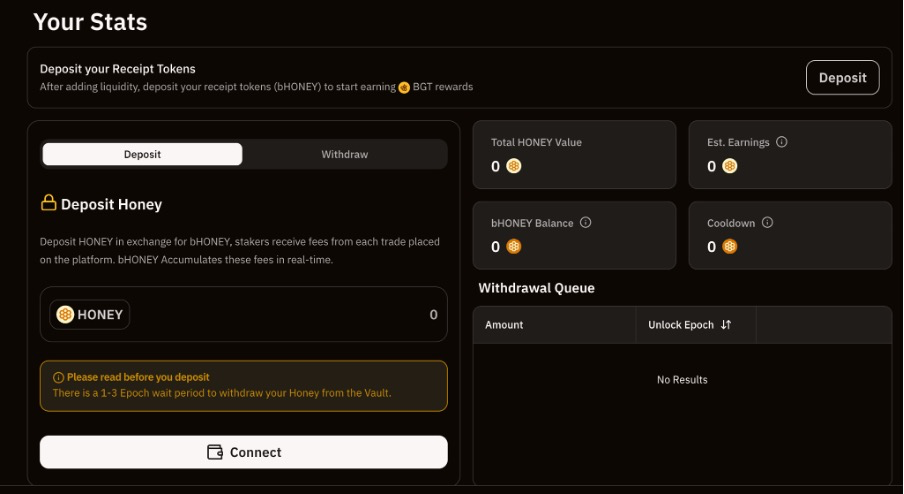
For more project interactions, the Vaults on BGT Station are a good reference, with different Vaults corresponding to different interaction projects, and you can interact to obtain the corresponding tokens and then deposit them in Station for earnings based on the BGT Capture indicator to judge the project's popularity.
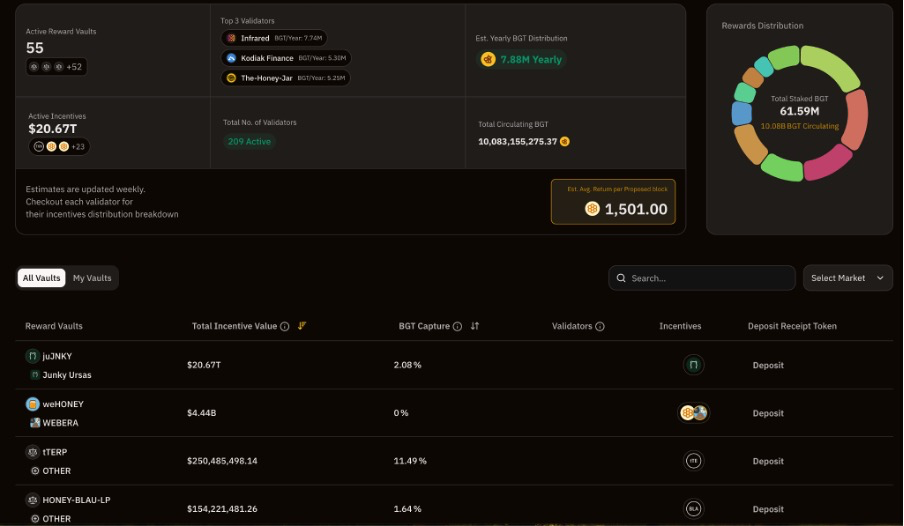
06 Conclusion
In my view, Berachain is a very crypto-native public chain, as it deeply understands the two core elements of the crypto world: liquidity and community.
The team has a deep understanding that the essence of crypto is liquidity. The project directly faces and embraces the Ponzi-like attributes, and through the carefully designed three-token and POL mechanism, this feature will release huge energy in the bull market. At the same time, the team is well-versed in community building.
While maintaining serious public chain development, it can also use meme culture to unite users and aggregate liquidity. A public chain with both a user base and sufficient liquidity, the launch of Berachain's mainnet is worth looking forward to, as it may bring a new wave of innovation to DeFi.






